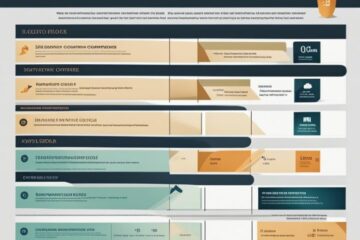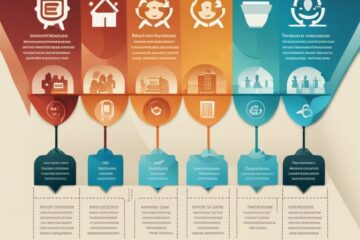Business Intelligence (BI) is a critical tool used by companies to analyze, interpret, and utilize their business data effectively. In this comprehensive guide, we will probe into the definition of BI, its importance in today’s competitive business landscape, and how organizations can harness the power of BI to drive strategic decision-making and achieve business objectives. By leveraging BI tools and technologies, businesses can gain valuable insights into their operations, identify trends, forecast future performance, and optimize processes for increased efficiency and profitability.
Key Takeaways:
- Business Intelligence (BI) refers to technologies, applications, and practices used to collect, integrate, analyze, and present business information.
- BI tools help organizations make informed decisions by providing historical, current, and predictive views of their operations based on data.
- BI platforms typically involve querying, reporting, data visualization, dashboards, and more to support decision-making processes at all levels of an organization.
- Data warehousing is often a key component of BI, involving the extraction, transformation, and loading (ETL) of data from various sources into a central repository for analysis.
- Business Intelligence can benefit organizations by improving operational efficiency, identifying market trends, optimizing processes, and ultimately enhancing overall performance and competitiveness.
- BI can be utilized across various industries such as healthcare, finance, retail, and more to drive data-driven decision-making and achieve strategic goals.
- Implementing BI strategies requires careful planning, stakeholder alignment, data quality management, and a culture that values insights derived from data analytics.
Understanding Business Intelligence (BI)
It is crucial for businesses to understand the ins and outs of Business Intelligence (BI) in today’s data-driven world. BI encompasses a set of strategies, technologies, processes, and tools that help organizations make informed decisions based on data analysis. By utilizing BI, companies can uncover valuable insights from their data to drive strategic planning, optimize operations, and gain a competitive edge in the market.
Definition of Business Intelligence
Any organization looking to leverage BI must first understand its definition. Business Intelligence refers to the process of collecting, analyzing, and transforming raw data into meaningful and actionable information that can be used to support decision-making within an organization. It involves the use of various software applications and tools to extract insights from data sets, enabling business leaders to make data-driven decisions that drive growth and efficiency.
The Evolution of BI
Understanding the evolution of BI is vital to grasp how it has transformed over the years. Business Intelligence has evolved from simple reporting tools to advanced analytics platforms that offer predictive modeling, data visualization, and real-time monitoring capabilities. As technology continues to advance, BI tools have become more accessible, user-friendly, and powerful, allowing organizations of all sizes to harness the power of data to drive business outcomes.
Evolution in BI tools has enabled organizations to move beyond historical reporting and examine into forecasting and predictive analytics, providing deeper insights into future trends and opportunities. By embracing the latest BI technologies, businesses can stay ahead of the curve and adapt quickly to changing market conditions.
How BI Differs From Data Analytics
Intelligence on how BI differs from data analytics is crucial for organizations aiming to make the most of their data resources. While Business Intelligence focuses on using data to drive strategic decision-making and support operational efficiency, data analytics involves more in-depth analysis to uncover trends, patterns, and correlations within the data. BI typically deals with structured data and provides insights into past and current performance, while data analytics often involves unstructured data and aims to predict future outcomes.
Business leaders need to understand the distinctions between BI and data analytics to determine which approach best suits their organization’s needs. By leveraging both BI and data analytics effectively, businesses can gain a comprehensive view of their operations and market dynamics, enabling them to make informed decisions that lead to sustainable growth and success.
Types of Business Intelligence Tools
For businesses looking to make data-driven decisions, leveraging the right Business Intelligence (BI) tools is crucial. There are various types of BI tools available in the market that cater to different analytical needs and requirements. Understanding the different types of BI tools can help businesses choose the right solution for their specific needs.
Descriptive Analytics
For businesses seeking to understand what happened in the past, descriptive analytics tools are important. These tools help in summarizing historical data to provide insights into past performance. By utilizing descriptive analytics, businesses can gain a better understanding of trends, patterns, and key performance indicators (KPIs) from historical data.
Diagnostic Analytics
You can explore deeper into understanding why certain events occurred in the past by using diagnostic analytics. These tools help in identifying the root causes of specific outcomes or events by analyzing historical data in more detail. By asking the right questions and exploring data relationships, businesses can uncover valuable insights to explain past performance.
Predictive Analytics
Predictive analytics tools enable businesses to forecast future trends and outcomes based on historical data patterns. By leveraging advanced algorithms and machine learning techniques, predictive analytics tools can help businesses anticipate potential future scenarios and make proactive decisions to drive better outcomes.
To further enhance decision-making processes, predictive analytics tools offer valuable insights into potential risks and opportunities, enabling businesses to stay ahead of the competition.
Prescriptive Analytics
An advanced level of analytics, prescriptive analytics tools not only forecast what is likely to happen but also provide recommendations on what actions to take. By utilizing optimization and simulation algorithms, prescriptive analytics tools help businesses make informed decisions to achieve specific goals and objectives.
By incorporating prescriptive analytics into their BI strategy, businesses can optimize decision-making processes and maximize the value derived from their data.
Comparison Between Different BI Tools
There’s a wide range of BI tools available in the market, each offering unique features and capabilities to support diverse analytical needs. When choosing the right BI tool, it’s crucial to consider factors such as scalability, ease of use, integration capabilities, and pricing.
Key Factors to Consider When Implementing BI
All businesses must consider several key factors when implementing Business Intelligence (BI) solutions to ensure successful deployment and optimal utilization. By carefully evaluating these factors, organizations can harness the power of data-driven insights to drive growth and competitive advantage in the market.
Understanding Your Data
On the journey to implementing BI, the first crucial step is understanding your data. This involves identifying the sources of data, the types of data available, and the quality of the data. Without a clear understanding of your data, any BI implementation is likely to fall short of delivering the desired results.
Integration Capabilities
On the topic of integration capabilities, it is necessary to ensure that your BI solution can seamlessly integrate with existing systems and databases. This includes compatibility with various data formats, APIs, and data sources to provide a comprehensive view of your organization’s data landscape. A robust integration framework is key to unlocking the full potential of BI across the enterprise.
A successful BI implementation hinges on the ability to consolidate data from disparate sources and transform it into actionable insights. Organizations should prioritize BI solutions that offer a high degree of flexibility and scalability in terms of data integration to adapt to evolving business needs.
User Accessibility and Adoption
On the aspect of user accessibility and adoption, it is critical to consider the needs and preferences of end-users when selecting a BI tool. The platform should be intuitive, user-friendly, and accessible across devices to promote widespread adoption within the organization. Training and support programs are also necessary to ensure that users can leverage the full capabilities of the BI solution.
Adoption of BI tools is directly linked to the value they deliver to end-users. Organizations should focus on selecting solutions that empower users to easily access, analyze, and derive insights from data to make informed decisions. User feedback and engagement are key indicators of a successful BI implementation.
Data Security and Compliance
Data security and compliance are paramount considerations in any BI implementation. Organizations must prioritize the security of their data assets and ensure compliance with industry regulations such as GDPR and HIPAA. Implementing robust security measures, encryption protocols, and access controls are necessary to prevent data breaches and safeguard sensitive information.
Ensuring data integrity and maintaining compliance with data protection regulations are critical for building trust with customers and stakeholders. Organizations should regularly audit their BI systems and processes to identify and address any potential vulnerabilities or compliance issues proactively.
Step-by-Step Implementation of BI
Assessing Business Needs and Goals
To effectively implement Business Intelligence (BI) in your organization, the first crucial step is to assess your business needs and goals. This involves understanding the current state of your business operations, identifying key performance indicators (KPIs) that align with your objectives, and setting clear goals for what you aim to achieve with BI.
| Assessing Business Needs and Goals | Understanding current business operations Identifying key performance indicators (KPIs) Setting clear goals |
Selecting the Right BI Tools
For a successful BI implementation, selecting the right BI tools is important. It’s important to evaluate tools that align with your business needs, offer scalability for future growth, provide user-friendly interfaces, and offer robust reporting capabilities. Consider factors such as integration with existing systems, ease of implementation, and vendor support.
Goals: Choosing the right BI tools can significantly impact the success of your BI implementation. It is crucial to involve key stakeholders in the decision-making process to ensure that the selected tools meet the specific requirements of your organization.
Data Preparation and Quality Management
While implementing BI, data preparation and quality management play a vital role in ensuring that the insights derived from BI tools are accurate and reliable. This involves cleaning and integrating data from multiple sources, ensuring data consistency, and implementing data quality checks to identify and rectify any discrepancies.
It: is imperative to establish robust data governance practices to maintain data integrity throughout the BI implementation process. By dedicating time and resources to data preparation and quality management, you can enhance the trustworthiness of the insights generated by your BI tools.
Deployment and Change Management
To ensure a smooth deployment of BI across your organization, it is important to have a well-defined deployment strategy and change management plan in place. This involves carefully planning the rollout of BI tools, training employees on how to use the tools effectively, and managing any resistance to change that may arise.
With: effective deployment and change management strategies, you can minimize disruptions to your business operations and maximize user adoption of BI tools. By involving key stakeholders from the start and communicating the benefits of BI, you can increase engagement and collaboration throughout the implementation process.
Training and Support for Users
Even the best BI tools will not deliver value if users do not know how to utilize them effectively. Providing comprehensive training and ongoing support to users is crucial for successful BI implementation. This includes training sessions, user guides, and access to helpdesk support for any questions or issues that may arise.
Implementation: of a robust training and support system ensures that employees feel confident using BI tools and are able to leverage the insights generated to make informed decisions. Investing in training and support can lead to higher user adoption rates and ultimately, a greater return on investment in BI.
Tips for Maximizing the Effectiveness of BI
To ensure that your Business Intelligence (BI) efforts are as effective as possible, there are a few key strategies you can implement. Setting clear objectives is crucial in guiding your BI initiatives and ensuring that they are aligned with your organization’s goals. Encouraging a data-driven culture within your company is also imperative to fully leverage the power of BI. Continuous monitoring and improvement will help you stay on top of your BI efforts and make necessary adjustments to optimize performance. Leveraging advanced technologies such as Artificial Intelligence (AI) and Machine Learning (ML) can take your BI capabilities to the next level.
Setting Clear Objectives
Keep your BI initiatives on track by defining clear objectives that are specific, measurable, achievable, relevant, and time-bound (SMART). This will help ensure that everyone involved in the BI process is working towards the same goals and that progress can be easily tracked and evaluated. Recognizing the importance of setting clear objectives will set the foundation for a successful BI strategy.
Encouraging Data-Driven Culture
Setting a data-driven culture within your organization is key to maximizing the effectiveness of BI. This involves creating a mindset where data is valued, and decisions are made based on data insights rather than intuition. Objectives such as fostering a culture of data literacy, providing training on data analysis tools, and encouraging data sharing across departments can help make data a central part of your organization’s DNA.
Assuming that your organization already has a data-driven culture in place, you can further enhance it by reinforcing the importance of data integrity, promoting collaboration between data analysts and business users, and rewarding data-driven decision-making. This will create a self-sustaining cycle where data-driven practices become the norm and drive continuous improvement.
Continuous Monitoring and Improvement
The key to long-term success with BI is to continuously monitor performance and make improvements as needed. Regularly review key performance indicators (KPIs) to track the effectiveness of your BI initiatives and identify areas for enhancement. By staying proactive and responsive to changes in your business environment, you can ensure that your BI efforts remain relevant and impactful.
This iterative approach to BI will help you adapt to evolving business needs, stay ahead of the competition, and drive innovation within your organization. By embracing a culture of continuous improvement, you can make BI a dynamic and integral part of your business strategy.
Leveraging Advanced Technologies (AI, ML)
The possibilities of leveraging advanced technologies like AI and ML in BI are endless. These cutting-edge tools can help automate processes, uncover hidden patterns in data, and generate valuable insights that would be impossible to discover manually. Here are some key ways AI and ML can supercharge your BI capabilities:
- Automating Data Analysis: AI and ML algorithms can analyze vast amounts of data in real-time, providing instant insights.
- Enhancing Predictive Analytics: Predict future trends and behaviors with greater accuracy using AI and ML models.
By integrating AI and ML into your BI strategy, you can unlock new possibilities for business growth, efficiency, and competitiveness. These technologies have the potential to revolutionize the way you analyze data and make decisions, giving you a significant edge in today’s data-driven business landscape.
The Pros and Cons of Business Intelligence
Once again, let’s research into the pros and cons of Business Intelligence. This tool offers numerous benefits to organizations looking to make data-driven decisions, but it also comes with its share of potential drawbacks and challenges. Understanding both sides is crucial for successful implementation and utilization of BI solutions.
The Benefits of Implementing BI
One of the primary advantages of implementing Business Intelligence is the ability to gain valuable insights from data in real-time. This empowers organizations to make informed decisions quickly, leading to improved operational efficiency and strategic planning. Additionally, BI can enhance data accuracy and consistency, providing a single source of truth for all stakeholders.
Potential Drawbacks and Challenges
Prospective challenges of Business Intelligence include the high initial investment costs associated with implementing BI tools. Moreover, organizations may face difficulties in integrating BI with existing systems and processes, which can lead to data silos and inefficiencies.
One way to mitigate these challenges is to carefully assess the specific needs and capabilities of your organization before begining on a BI implementation journey. By doing so, you can proactively address potential roadblocks and ensure a smoother transition to a data-driven culture.
Balancing the Pros and Cons for Informed Decision-Making
An effective approach to leveraging Business Intelligence involves balancing the pros and cons to make informed decisions. By carefully analyzing the benefits and drawbacks of BI for your organization, you can maximize its potential while minimizing any associated risks.
Implementing a robust BI strategy that takes into account the unique requirements of your business can lead to significant improvements in decision-making processes and overall performance. This strategic approach allows you to harness the power of data analytics effectively while mitigating any potential downsides.
Final Words
Now that you have a comprehensive understanding of what Business Intelligence (BI) is, you are well-equipped to explore its vast potential in transforming businesses. BI is not just a software tool, like CRM and ERP, or technology; it is a strategic approach that leverages data to drive informed decision-making and achieve organizational success. By harnessing BI tools and techniques, businesses can uncover valuable insights, identify trends, optimize processes, and gain a competitive edge in today’s data-driven world.
As you explore deeper into Business Intelligence, remember that the key to effective BI implementation lies in aligning technology with business goals, fostering a data-driven culture, and continuously evolving to meet the ever-changing demands of the market. Embrace BI as a powerful ally in driving growth, efficiency, and innovation within your organization, and watch as it propels you towards success in the dynamic landscape of modern business.
FAQ
Q: What is Business Intelligence (BI)?
A: Business Intelligence (BI) refers to the technology-driven process of gathering, analyzing, and presenting actionable information to help businesses make more informed decisions.
Q: Why is Business Intelligence important for businesses?
A: BI helps businesses gain insights into their operations, customers, and market trends, leading to improved performance, increased efficiency, and competitive advantage.
Q: What are the key components of Business Intelligence?
A: The key components of BI include data integration, data warehousing, data visualization, dashboards, reporting tools, and analytics capabilities.
Q: How is Business Intelligence different from Business Analytics?
A: Business Intelligence focuses on descriptive and diagnostic analytics, providing historical and current data insights, while Business Analytics incorporates predictive and prescriptive analytics to forecast future trends and recommend actions.
Q: What are the benefits of implementing Business Intelligence in an organization?
A: Some benefits of BI implementation include improved decision-making, enhanced operational efficiency, better insights into customer behavior, increased revenue, and cost savings.
Q: How can businesses leverage Business Intelligence tools effectively?
A: To leverage BI tools effectively, businesses should define clear objectives, ensure data quality and accuracy, train employees on tool usage, integrate BI into decision-making processes, and continuously evaluate and refine strategies.
Q: What are some popular Business Intelligence tools in the market?
A: Popular BI tools in the market include Tableau, Power BI, QlikView, SAP BusinessObjects, IBM Cognos, and MicroStrategy, offering a range of features for data analysis, visualization, and reporting.









